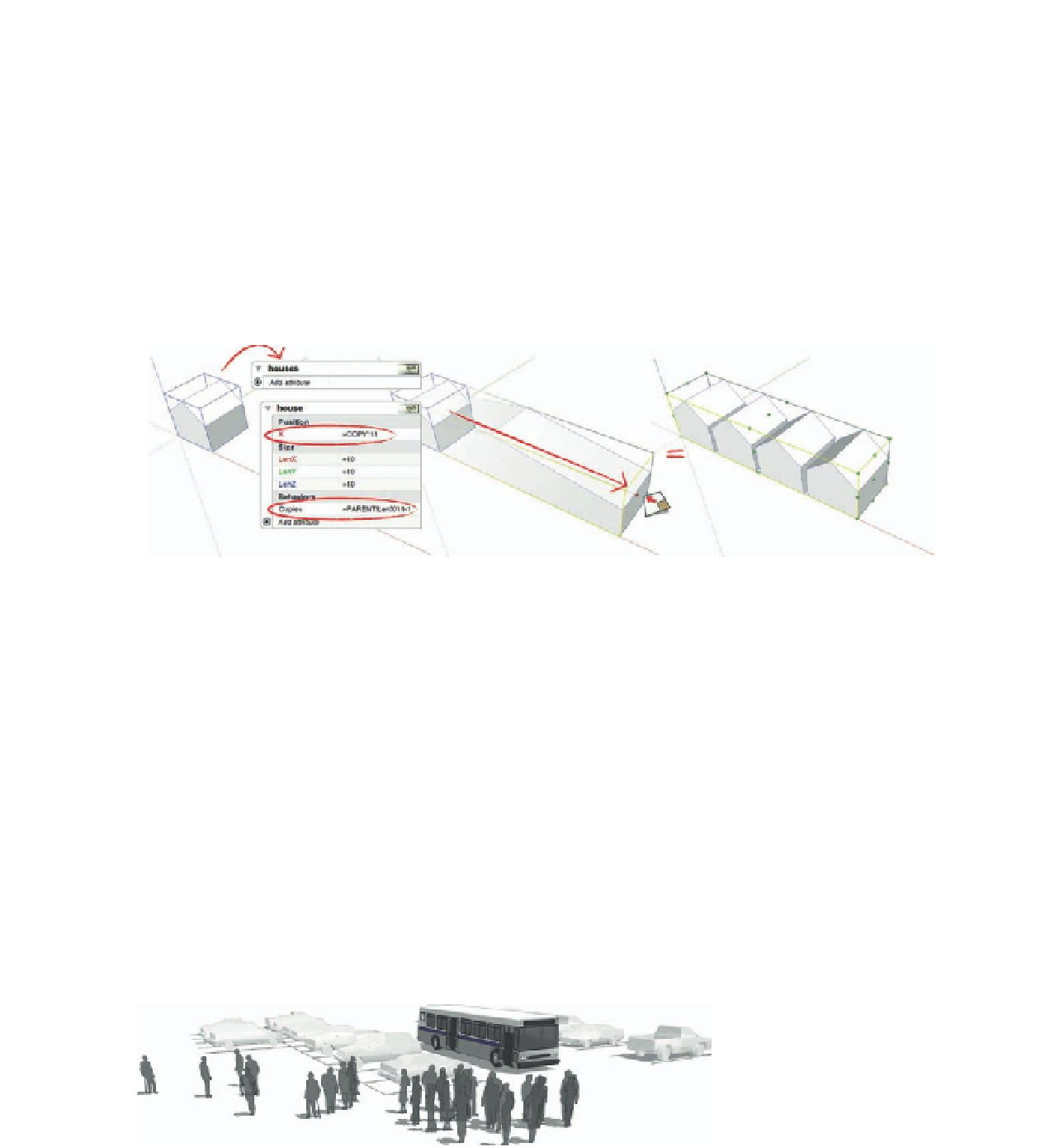Graphics Programs Reference
In-Depth Information
address them all. By examining specific examples I have used in my SketchUp
workflow, I will offer a glimpse into their potential as well as provide some
helpful tips for both creating and using Dynamic Components.
With regard to creating Dynamic Components, you will rarely see Google
use the verb “program” because (I am guessing) it conflicts with SketchUp's
mantra of “3D for Everyone.” From experience, I can tell you that having a
working knowledge of programming surely does not hurt anyone. A fondness
to algebra and trigonometry is also a big plus. I do not intend to scare anyone
away from Dynamic Components; building a component with simple dynamic
functionality, such as replication, is relatively easy.
Many Dynamic Component function examples similar to the one above
can be found at http://tinyurl.com/dc-functions. The Dynamic Components
detailed here were more of a technical challenge to create. From a user
perspective, there are certain qualities that will make a Dynamic Component
more practical. It should be clear in what exactly is dynamic about it, it should
function as expected, and its digital “weight” should be manageable (Dynamic
Components, especially ones that replicate parts and have a lot of functions,
can become very large very fast). Those qualities may appear obvious, but
for an example of why they need to be stated, search the Google SketchUp
3D Warehouse (http://sketchup.google.com/3dwarehouse) for “Dynamic
Window.” You will find some windows that glue to a surface, some that copy
and position when scaled, some that hold multiple window configurations,
and some that have no dynamic feature whatsoever. Trying to find a specific
Dynamic Component currently will either frustrate you to the point where you
do not want to use them or motivate you to create better one.

Search WWH ::

Custom Search